The length of a rehabilitation program for alcohol or drug abuse is as important as the treatment being given. While there is no set amount of time for treatment that is recommended, it is widely recognized in clinical and governmental institutions that longer-term programs are viewed as being more effective for the clients. Generally, anything over a month is considered to be long-term residential treatment.
Unfortunately, the insurance industry has had a part in dictating the length of residential care often by limiting the number of days covered to just 30. Obviously, the longer the period of residential treatment, the more expensive the cost, so insurance companies are incentivized to limit the number of days they allow. Shouldn’t the length of treatment be based upon the individual and backed by proven metrics from across the behavioral health industry?
The standard 28-day or 30-day treatment program has a poor success rate compared to a more extended residential program, like 90-days. People abusing drugs or alcohol have usually been doing so for years before they finally reach the point of receiving treatment. Therefore, it often takes much more than a couple of weeks or a month to reverse what damage has been done.
Our program at Gulf Breeze Recovery is tailored to the needs of each individual in a longer-term setting and has a specialized aftercare life plan component to help people along in their continued transition toward permanent recovery. Call 833.551.2304 today for more information.
Why Is Long-Term Treatment Not the Standard?
The 30-day rehab program dates back to the U.S. military in the 1970s. During that time, 30-day programs allowed servicemen and women to undergo rehab without having to be reassigned. The civilian sector adapted this recovery model, and insurance companies codified it by agreeing to pay only for 30 days. This practice continues today and poses a financial barrier to successful recovery for many people.
30-Day Vs. 90-Day Long-Term Treatment
While the insurance companies may be promoting a 30-day rehab, the scientific evidence supports a 90-day long-term treatment program, not a 30-day. The National Institute on Drug Abuse (NIDA) states in a January 2018 article: “Generally, for residential or outpatient treatment, participation for less than 90 days is of limited effectiveness, and treatment lasting significantly longer is recommended for maintaining positive outcomes. For methadone maintenance, 12 months is considered the minimum, and some opioid-addicted individuals continue to benefit from methadone maintenance for many years.”
Gulf Breeze Recovery Offers Long-Term Treatment in Florida
Gulf Breeze Recovery takes an individualized, holistic approach to addiction treatment and recovery. Our coastal location in Florida on the Gulf of Mexico offers white-sand beaches, the beautiful weather of the Emerald Coast, and even the occasional pod of passing dolphins!
We do not believe anyone is broken–we offer a mindfulness-based, non-12 step approach that includes evidence-based and holistic therapies such as:
- Eye movement desensitization and reprocessing therapy (EMDR)
- Anger management therapy
- Exercise therapy
- Experiential therapy
- Family therapy
- Group therapy
- Meditation therapy
With our beautiful location and highly trained staff, recovery is attainable.
Are You Ready to THRIVE®? Contact Gulf Coast Recovery Today
If you or someone you care about has an ongoing history of substance use and relapse, we offer hope, and we can help. Unlike other treatment centers in Florida, Gulf Breeze Recovery is a non-12 step holistic drug and alcohol rehab that is changing the future of addiction treatment with their THRIVE® (Total Health Recovery) program focused on overcoming chronic relapse.
Contact us at Gulf Breeze Recovery or call: 833.551.2356 to speak to an addiction expert to learn more about our program that has helped so many people overcome their addiction and embrace life.







